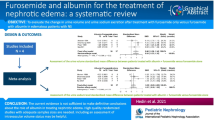Abstract
Background
Peritonitis is a frequent and serious complication of peritoneal dialysis (PD). Whether low immunoglobulin level is associated with PD-related peritonitis is unknown.
Methods
We conducted a prospective study to assess whether immunoglobulin levels at PD onset could predict the occurrence of peritonitis. All patients starting peritoneal dialysis between 01/2005 and 12/2010 at the University hospital of Besançon, France, were included in the study.
Results
Of 240 consecutive PD patients enrolled (mean follow-up 25 ± 12 months), 76 (32 %) had at least one episode of peritonitis. Mean immunoglobulin (Ig)G level at PD start was lower in patients who subsequently experienced peritonitis (7.9 + 3.4 vs. 9.7 + 3.4 g/l, p = 0.005). An increased IgG level at PD onset was associated with a reduced risk of peritonitis [hazard ratio (HR) 0.88, 95 % confidence interval (CI) 0.80–0.97 for each increase of 1 g/l in IgG, p = 0.008]. IgG level ≤6.4 g/l (“low IgG”) was the best predictive value for the occurrence of subsequent peritonitis: 52 patients (24 %) had low IgG levels. At multivariate analysis, both low IgG level (HR 2.49, 95 % CI 1.32–4.69, p = 0.005) and diabetes (HR 2.78, 95 % CI 1.49–5.20, p = 0.001) were predictive of the occurrence of peritonitis.
Conclusion
Low IgG levels predict the occurrence of PD-related peritonitis. Randomized studies should determine whether such patients could benefit from intravenous immunoglobulin administration.

Similar content being viewed by others
References
Boudville N, Kemp A, Clayton R, Lim W, Badve SV, Hawley CM, McDonald SP, Wiggins KJ, Bannister KM, Brown FG, Johnson DW (2012) Recent peritonitis associates with mortality among patients treated with peritoneal dialysis. J Am Soc Nephrol 23:1398–1405
Brown MC, Simpson K, Kerssens JJ, Mactier RA, Scottish Renal Registry (2011) Peritoneal dialysis-associated peritonitis and outcomes in a national cohort are not improving in the post-millenium. Perit Dial Int 31:639–650
Piraino B, Bernardini J, Brown E, Figueiredo A, Johnson DW, Lye W-C, Price V, Ramalakshimi S, Szeto C-C (2011) ISPD position statement on reducing the risk of peritoneal dialysis-related infections. Perit Dial Int 31:614–630
Prasad N, Gupta A, Sharma RK, Sinha A, Kumar R (2007) Impact of nutritional status on peritonitis in CAPD patients. Perit Dial Int 27:42–47
Rudnicki M, Kerschbaum J, Hausdorfer J, Mayer G, König P (2010) Risk factors for peritoneal dialysis-associated peritonitis: the role of orale active vitain D. Perit Dial Int 30:541–548
Troidle L, Watnick S, Wuerth DB, Gorban-Brennan N, Kliger AS, Finkelstein FO (2003) Depression and its association with peritonitis in long-term peritoneal dialysis patients. Am J Kidney Dis 42:350–354
Fust DE (2009) Serum immunoglobulins and risk of infection: how low can you go? Semin Arthritis Rheum 39:18–29
Bonagura VR (2013) Using intravenous immunoglobulin (IVIG) to treat patients with primary immune deficiency disease. J Clin Immunol 33(suppl 2):S90–S94
Bouts AH, Davin JC, Krediet RT, van der Weel MB, Schröder CH, Monnens L, Nauta J, Out TA (2000) Immunoglobulins in chronic renal failure of childhood: effects on dialysis modalities. Kidney Int 58:629–637
Poyrazoglu HM, Düsündel R, Patiroglu T, Gündüz Z, Utas C, Günes T (2002) Humoral immunity and frequency of peritonitis in chronic peritoneal dialysis patients. Pediatr Nephrol 17:85–90
De Vecchi AF, Kopple JD, Young GA, Nolph KD, Vonesh EF, Castelnovo C, Dichiro J, Nissenson A, Brownjohn AM, Prowant B (1990) Plasma and dialysate immunoglobulin G in continuous ambulatory peritoneal dialysis: a multicentre study patients. Am J Nephrol 10:451–456
Li PK, Szeto CC, Piraino B, Bernardini J, Figueiredo AE, Gupta A, Johnson DW, Kuijper EJ, Lye WC, Salzer W, Schaefer F, Struijk DG, International Society for Peritoneal Dialysis (2010) Peritoneal dialysis-related infections recommendations: 2010 update. Perit Dial Int 30:393–423
Mawhorter S, Yamani MH (2008) Hypogammaglobulinemia and infection risk in solid organ transplant recipients. Curr Opin Organ Transplant 13:581–585
Caress JB, Kennedy BL, Eickmann KD (2010) Safety of intravenous immunoglobulin treatment. Expert Opin Drug Sa 9:971–979
Coban E, Ozdogan M, Tuncer M, Bozcuk H, Ersoy F (2004) The value of low-dose intraperitoneal immunoglobulin administration in the treatment of peritoneal dialysis-related peritonitis. J Nephrol 17:427–430
Dursun B, Tuncer M, Felek R, Ersoy FF (2005) Benefits of low dose immunoglobulin in the treatment of refractory CAPD peritonitis and longevity of technical survival on CAPD. Int Urol Nephrol 37:565–569
Lamperi S, Carozzi S, Nasini MG (1987) Intraperitoneal immunoglobulin (IG) treatment in prophylaxis of bacterial peritonitis in CAPD. Biomater Artif Cells Artif Organs 15:151–159
Keane WF, Comty CM, Verbrugh HA, Peterson PK (1984) Opsonic deficiency of peritoneal dialysis effluent in continuous ambulatory peritoneal dialysis. Kidney Int 25:539–543
Kershbaum J, Konig P, Rudnicki M (2012) Risk factors associated with peritoneal-dialysis-related peritonitis. Int J Nephrol 2012:483250
Conflict of interest
The authors have no conflict of interest as defined by Journal of Nephrology.
Ethical approval
All procedures performed in studies involving human participants were in accordance with the ethical standards of the institutional and/or national research committee and with the 1964 Helsinki declaration and its later amendments or comparable ethical standards.
Informed consent
Informed consent was obtained from all individual participants included in the study.
Author information
Authors and Affiliations
Corresponding author
Additional information
The results presented in this paper have not been published previously as a whole or in part.
Rights and permissions
About this article
Cite this article
Courivaud, C., Bardonnet, K., Crepin, T. et al. Serum immunoglobulin G levels and peritonitis in peritoneal dialysis patients. J Nephrol 28, 511–515 (2015). https://doi.org/10.1007/s40620-015-0176-2
Received:
Accepted:
Published:
Issue Date:
DOI: https://doi.org/10.1007/s40620-015-0176-2




